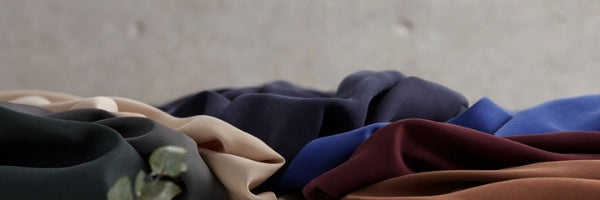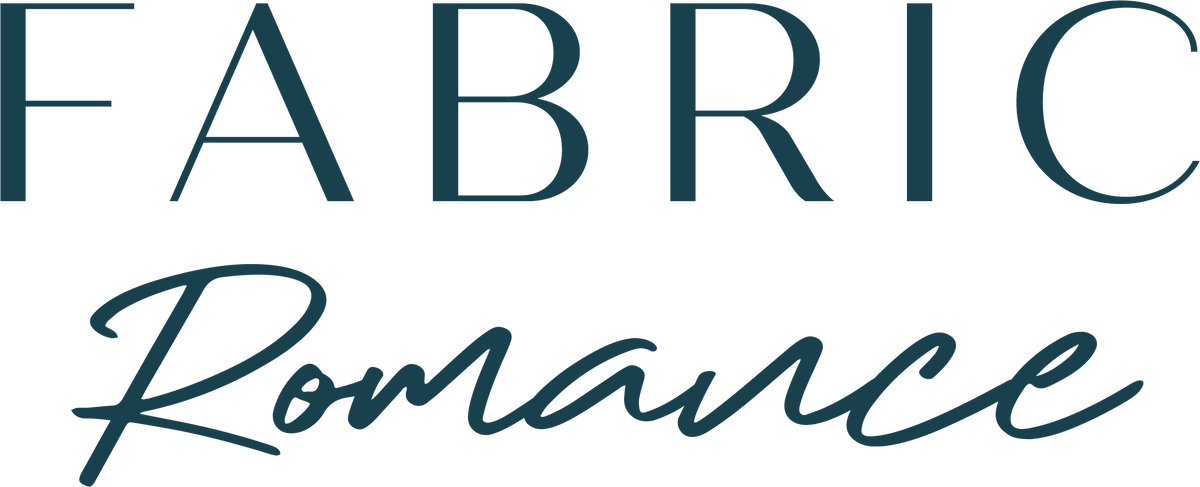
Tencel and Modal fibres are increasingly popular especially among eco responsible sewists, and they have become the go to fabrics for many ethical and conscious clothing brands. Both fibres are soft and smooth to touch, strong and durable with a beautiful drape and, Tencel is also known to be resistant to wrinkles. That alone sounds pretty amazing, right?! But what are Tencel and Modal? What is Lyocell? Are they natural fibres? Are they sustainable? Are they biodegradable? So many questions...
Here is everything you need to know to help you decide if you would like clothing made of either material in your wardrobe.
WHAT IS TENCEL?
The first thing you should know is that Tencel is a brand name, such as Coca-Cola for example. When we are talking about Tencel, we are really talking about Tencel™ branded lyocell fibres created by Austrian textile company Lenzing AG. There is a big difference between Tencel™ branded lyocell and other types of generic lyocell (more on this in a little bit). So what is lyocell then you might ask.
DEFINITION OF LYOCELL
In short: It is a form of rayon which consists of cellulose fibre made from wood pulp or cotton linter.
There are different types of rayon. Often marketers will want to categorise rayons by what they are made of and the chemicals used, the textile industry however breaks rayons down by the process involved to produce these fibres.
Today we have three generations of rayon processing technology - viscose, modal and lyocell. Lyocell being the 3rd generation.
A REGENERATED FIBRE WITH BOTANIC ORIGIN
Lyocell (and Rayon in general) is neither synthetic nor is it a fully natural fibre. It is something in between; A man made fibre with botanic (natural) origins also referred to as a regenerated cellulose fibre.
NOT ALL LYOCELL IS EQUAL
As noted earlier, there is a difference between Tencel™ branded lyocell by Lenzing and other types of generic lyocell. For a product to carry the Tencel trademark, it must contain at least 30% of the Lenzing fibres. You are probably wondering what is so special about Lenzing Tencel™ lyocell?
HOW ITS MADE
Generic lyocell is often made from wood pulp from oak and birch trees. Lenzing Tencel, however, is made from eucalyptus wood that is harvested from natural forests and sustainably managed tree farms. Eucalyptus trees are fast growing, and require no toxic pesticides and very little water to thrive. Lenzing is very committed to the ethical sourcing of their wood and fabrics comes with forest certification for their pulp production.
THE PROCESS - SUSTAINABILITY AT THE CORE

The bare Eucalyptus tree trunks are chopped into small woodchips. These pieces end up in big container filled with a non-toxic amine oxide solution. This solution breaks the Eucalyptus wood pulp down into a semi-liquid paste. The paste is then ejected under pressure from a special spinneret nozzle (looks a little like a shower head) to form fibre threads. The threads are eventually processed into yarn which can then be used to produce fabric.
Although chemicals are being used, they are not environmentally sensitive and they do not end up in nature due to Lenzing's innovative closed loop production process. This means that more than 99% of the solvents used within the process are recycled and continuously reused which makes the Lenzing fibre production eco-friendly.
As a textile, Tencel feels amazing. It is as soft as silk and as strong as polyester, with antibacterial properties and a cooling effect on your skin.
WHAT IS MODAL FABRIC?
You can call it the 2nd generation of the regenerated cellulose fibres (viscose/rayon being the 1st gen and Tencel being the 3rd gen). Modal was first developed by Lenzing who has the trademark for it, but nowadays many manufacturers make their own versions.
Modal too is made from wood pulp (sustainably managed beech) but it is made using a slightly different process to lyocell. Both fibres however use the closed loop production process making Modal too a sustainable fibre.
Modal shares a lot of similarities with Tencel when it comes to softness, comfort, breathability and moisture absorption. In terms of texture, the main difference for you is that Modal has a slightly more delicate touch and feel. It feels softer and it is often made into lighter and thinner fabrics compared to Tencel.ARE TENCEL AND MODAL FIBRES BIODEGRADABLE?
The short answer is 'yes'. The fibres are certified as compostable and biodegradable, and in the right conditions can fully revert back to nature. The longer and more informed answer, in order to fully decompose, they need special and regulated environments.
So as with most things, try to avoid the landfill and consider upcycling, clothes swaps etc.
FABRIC OF YOUR CHOICE?
We hope this article will help you to make an informed decision when you go fabric or clothes shopping in the future.
At Fabric Romance we stock a selecton of high quality and Lenzing certified Tencel by Danish brand meetMILK as well as some of their Modal fabrics.
~~~
Questions? Comments? Drop us a line at hello@fabricromance.ie
If you have enjoyed this read then sign up for our Newsletter and follow us on Facebook, Instagram & Pinterest.

0 comments